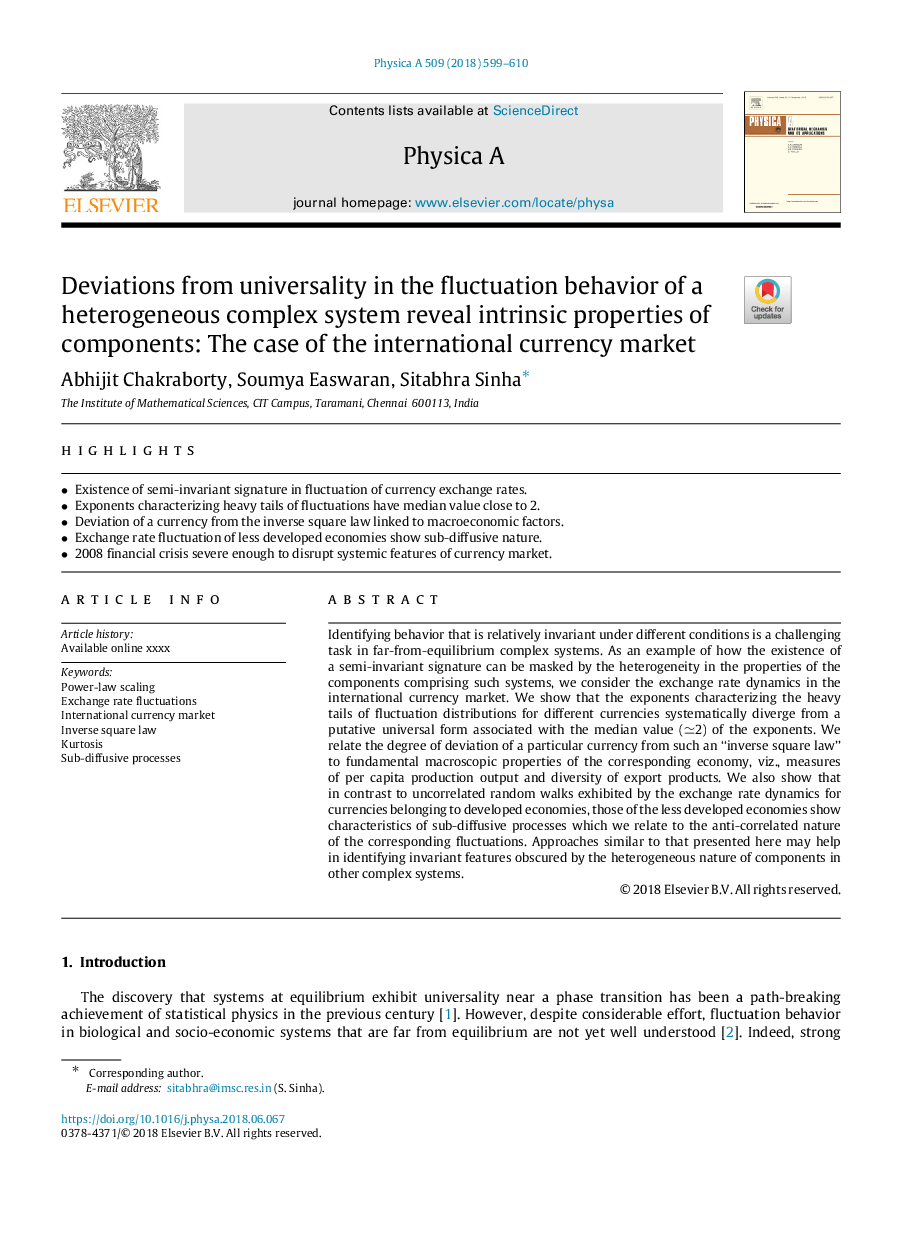| Article ID | Journal | Published Year | Pages | File Type |
|---|---|---|---|---|
| 7374883 | Physica A: Statistical Mechanics and its Applications | 2018 | 12 Pages |
Abstract
Identifying behavior that is relatively invariant under different conditions is a challenging task in far-from-equilibrium complex systems. As an example of how the existence of a semi-invariant signature can be masked by the heterogeneity in the properties of the components comprising such systems, we consider the exchange rate dynamics in the international currency market. We show that the exponents characterizing the heavy tails of fluctuation distributions for different currencies systematically diverge from a putative universal form associated with the median value (â2) of the exponents. We relate the degree of deviation of a particular currency from such an “inverse square law” to fundamental macroscopic properties of the corresponding economy, viz., measures of per capita production output and diversity of export products. We also show that in contrast to uncorrelated random walks exhibited by the exchange rate dynamics for currencies belonging to developed economies, those of the less developed economies show characteristics of sub-diffusive processes which we relate to the anti-correlated nature of the corresponding fluctuations. Approaches similar to that presented here may help in identifying invariant features obscured by the heterogeneous nature of components in other complex systems.
Related Topics
Physical Sciences and Engineering
Mathematics
Mathematical Physics
Authors
Abhijit Chakraborty, Soumya Easwaran, Sitabhra Sinha,
